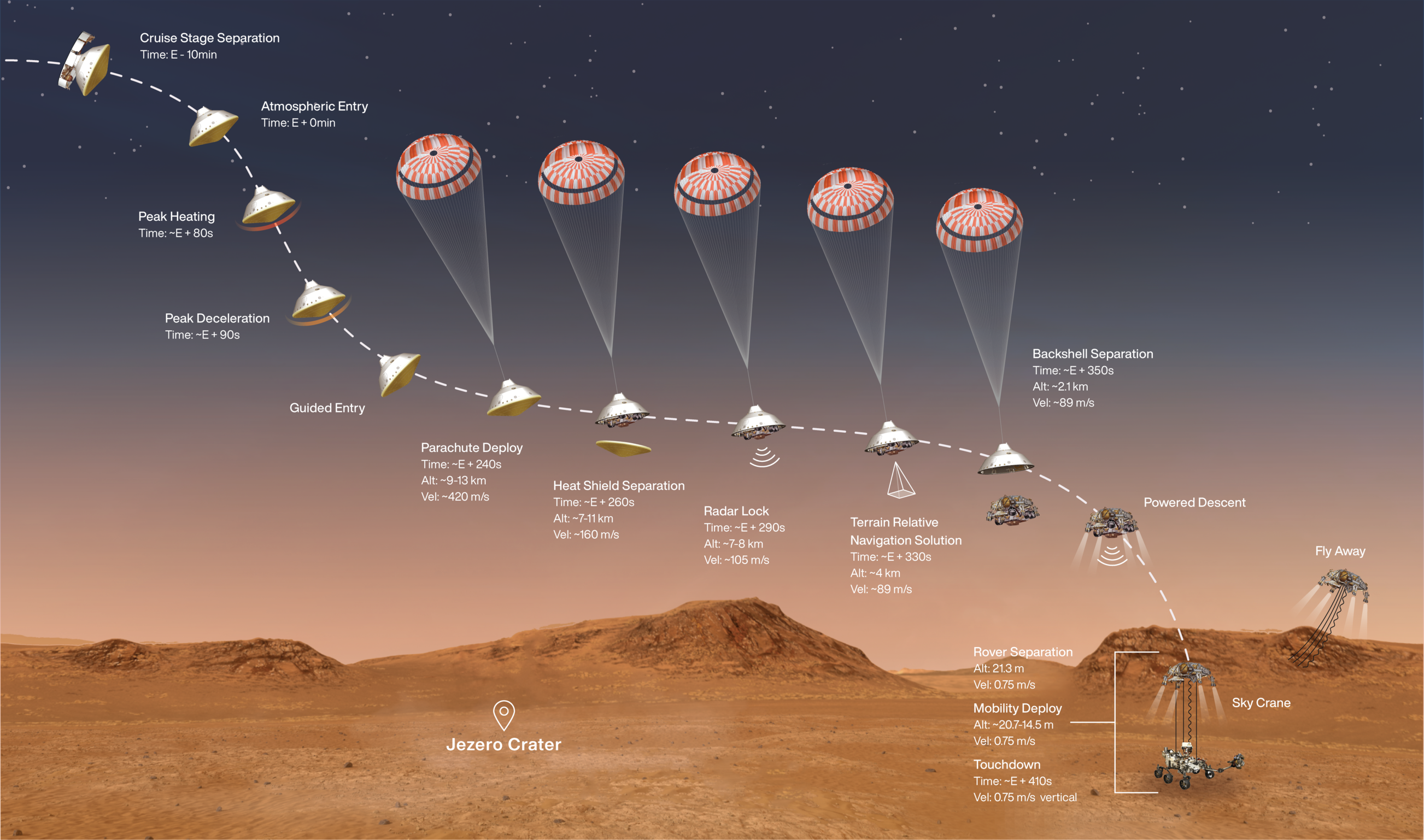
Animation courtesy of NASA/JPL-Caltech
The Perseverance Rover is the centerpiece of NASA's "Mars 2020" mission. Launched on an Atlas rocket on July 30, 2020, the spacecraft reached Mars on February 18, 2021. In order to place the rover safely on the Martian surface, NASA employed a series of techniques, culminating in the nerve-wracking "sky crane". (Click on the image to see a short animation)

Animation courtesy of
NASA/JPL-Caltech
All went well, and the rover was deployed without any damage. The official duration of the rover's mission on the surface is one full Martian year -- 687 Earth days -- or until January 5, 2022.
Gosh, that's just about four months from now!
But wait a moment. That's just the "official" duration. NASA's scientists and engineers hope that the rover will continue to operate long past its nominal lifetime, just as its predecessors did.
Speaking of its predecessors, let's compare the newest rover to other vehicles which have traversed the surface of the Red Planet.
NASA has placed three "models" of mobile explorers on Mars (in addition to several series of stationary probes). Perseverance is the second entry of the "Mars Science Laboratory" model.
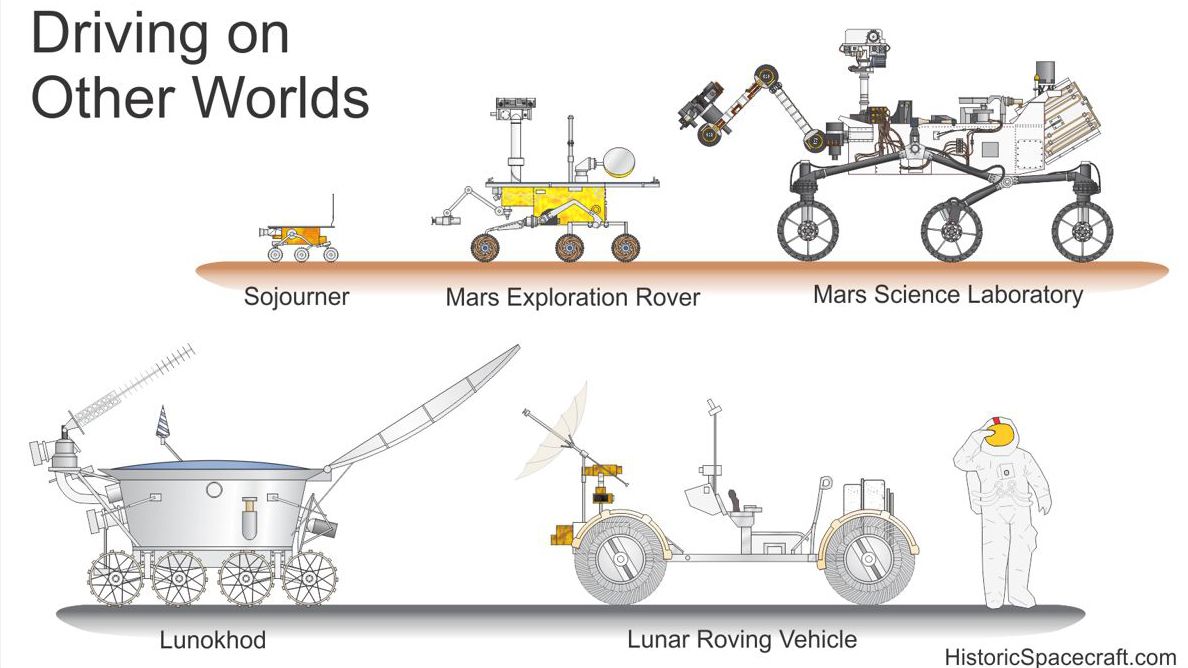
Image courtesy
Historic Spacecraft.com
This family portrait features duplicates of the real rovers which were kept at JPL for testing.
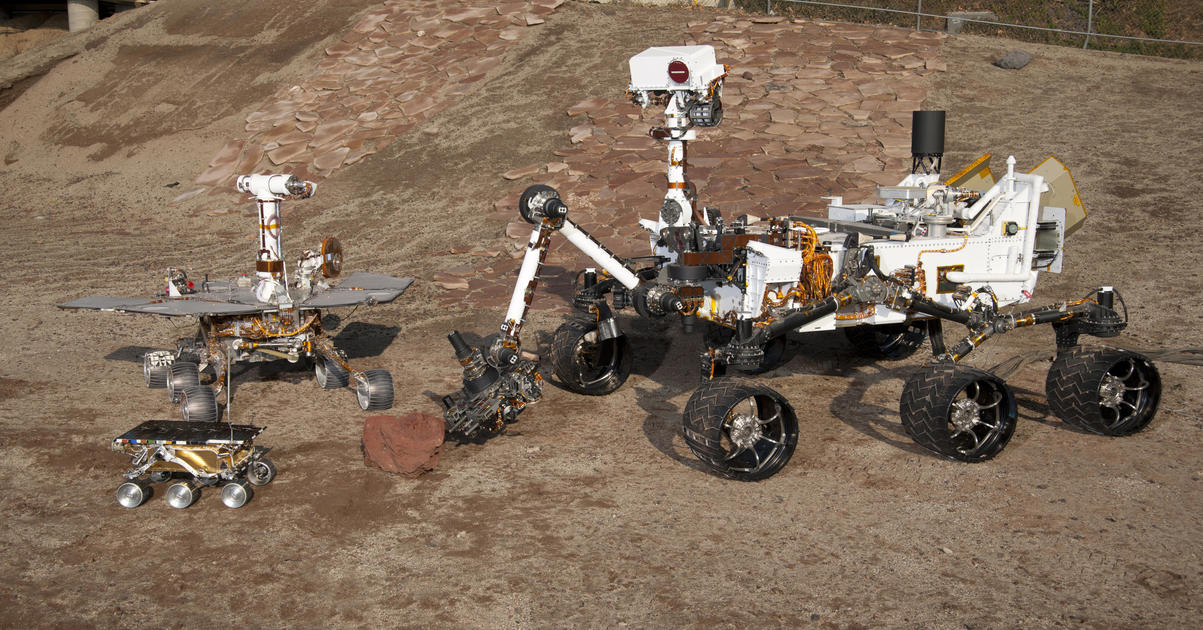
Image courtesy of
NASA/JPL-Caltech
Q: What big obvious feature of the two smaller rovers
is missing from the Mars Science Laboratories?
The smaller rovers were powered by solar panels. The Mars Science Laboratories have their own Radioisotope Thermoelectric Generator (RTG) power source. It contains 4.8 kilograms of plutonium oxide which generates heat via the radioactive decay of Pu atoms. The heat is used to generate electricity, producing about 110 Watts at launch; but the power decays gradually due to the ever-decreasing amount of plutonium in its power source. Even so, the RTG could provide enough electricity to power Perseverance for up to 12 or 13 years after landing.
Perseverance is the younger brother of Curiosity, arriving nine years after its sibling. Despite its youth, it is slightly larger -- 3 meters long, 2.7 meters wide, and 2.2 meters tall -- and more massive -- 1025 kg -- than its near-twin. Its instrument package is also slightly more sophisticated, containing updates such as a pet helicopter.
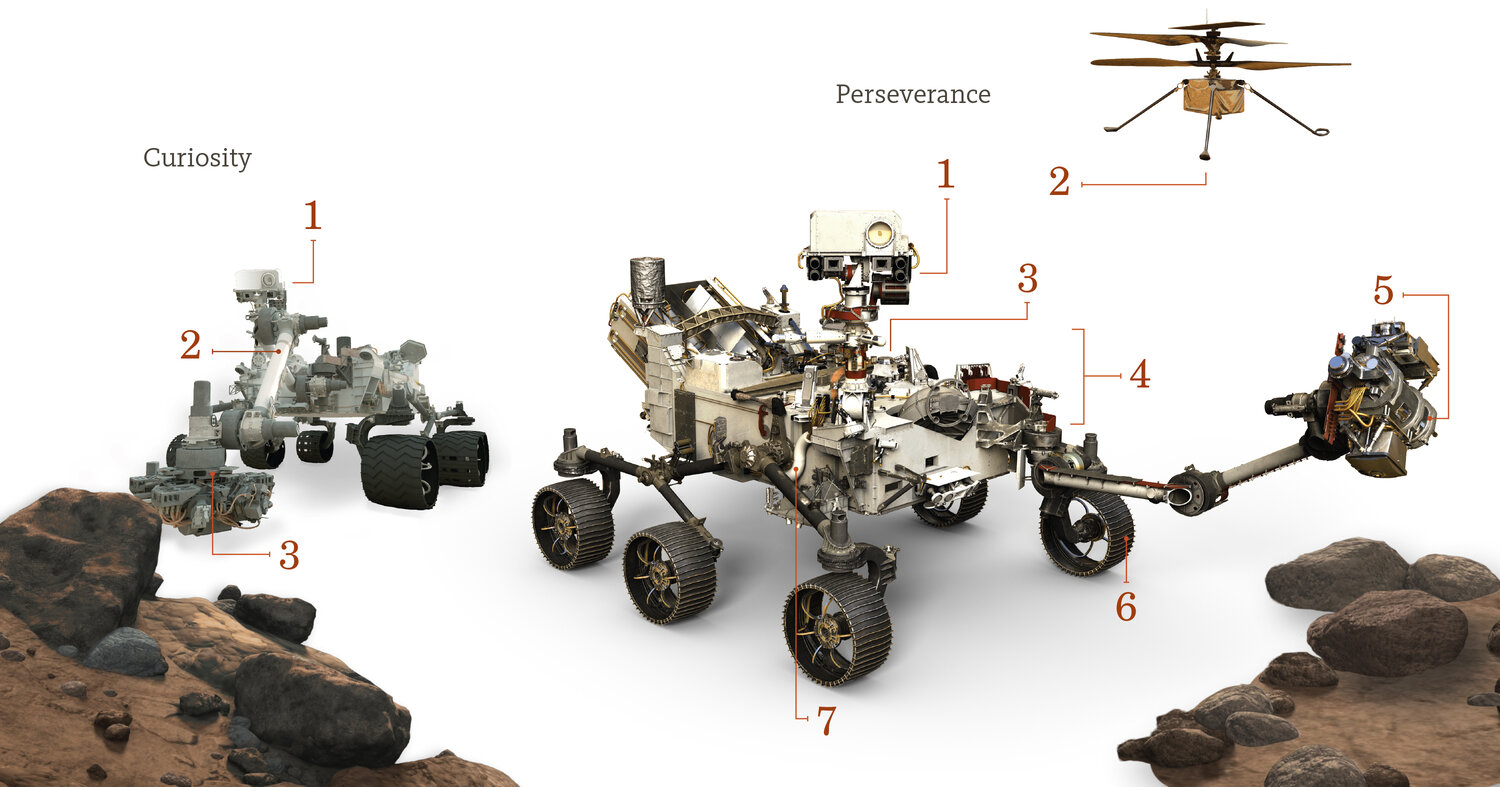
Image courtesy of
Caltech Magazine
We should not forget that Curiosity and Perseverance are NOT the only active vehicles on the Martian surface. China's first mission to Mars successfully placed its own rover, named "Zhurong", onto the landscape on May 22, 2021.
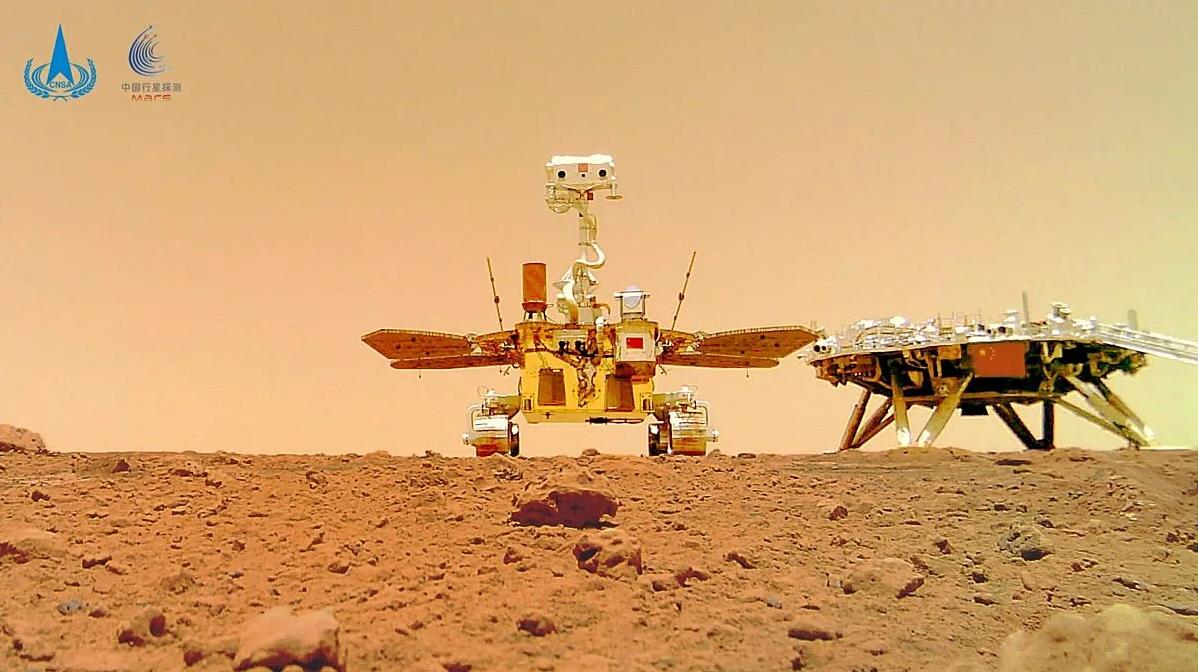
Image courtesy of
Chinese national space agency (CNSA) and Chinese Academy of Sciences (CAS)
Zhurong has continued operating past its nominal mission lifetime, which ended on Aug 15, 2021. In just a week or two, the Sun will pass between Mars and the Earth, interfering with radio communications. Zhurong will put itself in safe mode for five to six weeks, then wake up and continue its work once communications can be re-established.
NASA will also curtail operations during this solar conjunction, but only for about two weeks.
Perseverance differs from its sibling in one VERY important respect: it has a new and special mission goal. It will play the first part of a complicated procedure that will, eventually, return samples of Martian rocks and soil to the Earth, where scientists might examine them directly! The basic idea goes like this ...
Step 1 (2021-2023?): Perseverance collects samples of material and seals them into titanium tubes. It carries the tubes to one (or more) "drop zones", then leaves them on the ground.
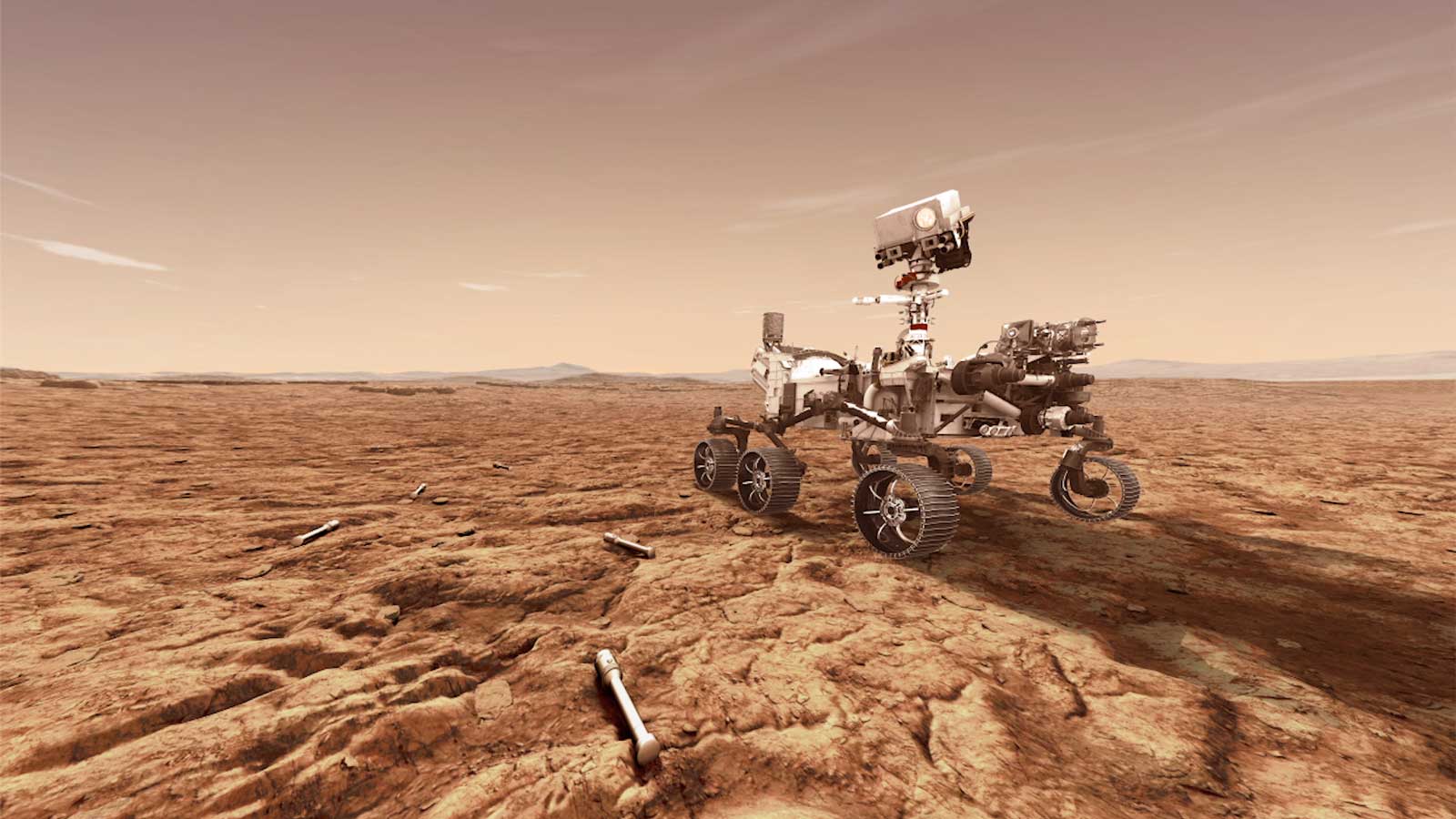
Image courtesy of
NASA/JPL-Caltech
Step 2 (2028?): A second NASA/ESA mission, the Sample Return Rover, drives around to pick up the tubes.
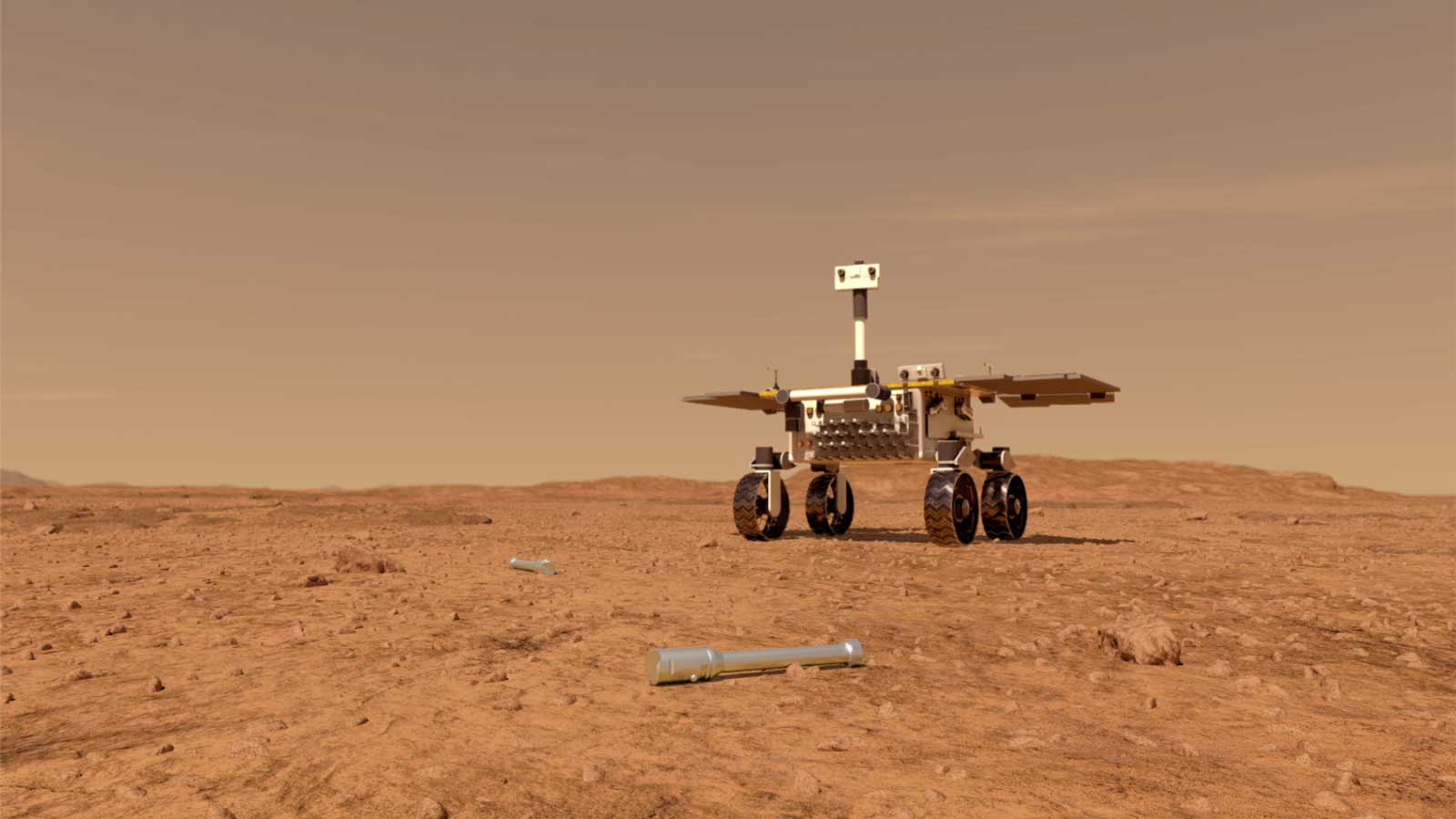
Image courtesy of
NASA/JPL-Caltech
Step 3 (2028?): The Sample Return Rover brings all the tubes to its parent, the the Sample Return Lander.
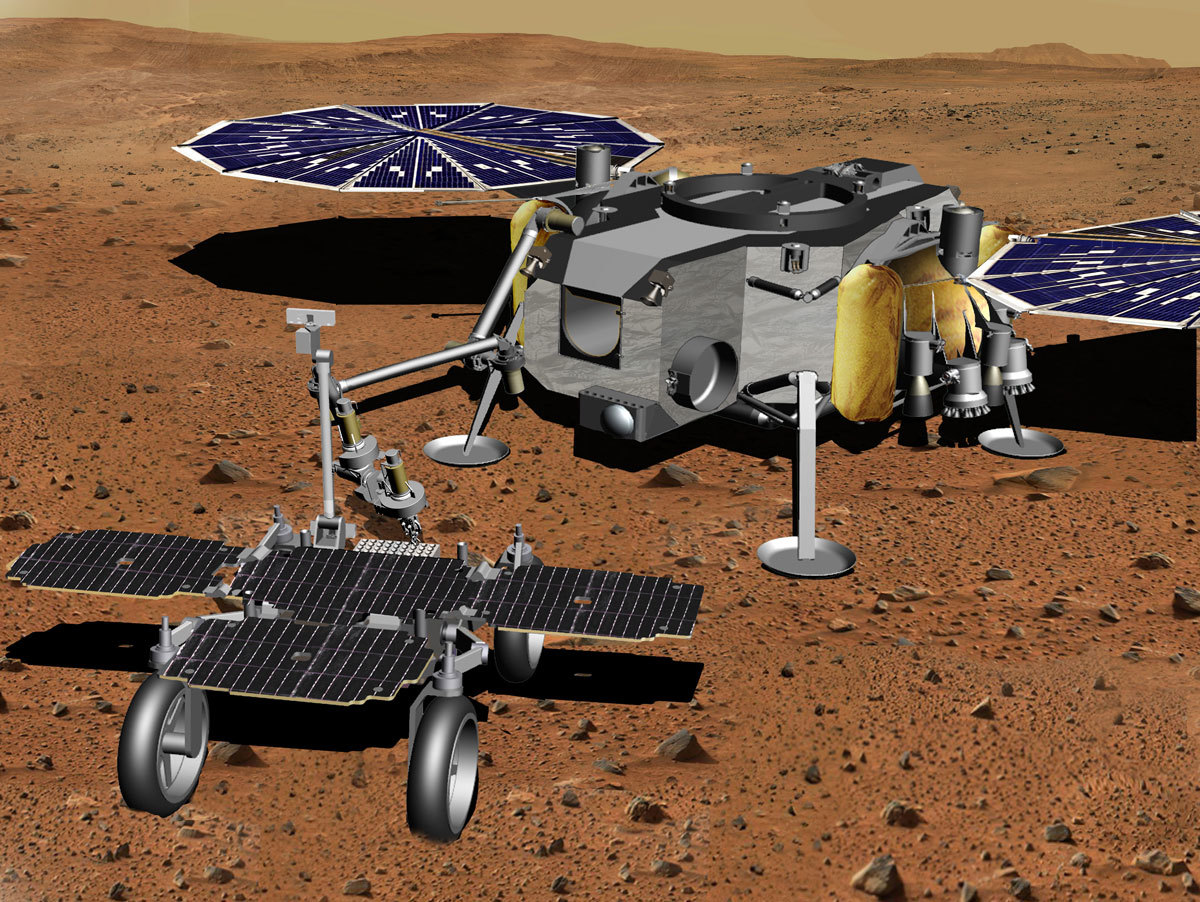
Image courtesy of
NASA/JPL-Caltech
Step 5 (2028? 2029?): The Sample Return Lander places all the tubes into a small rocket and fires it into a low orbit around Mars.
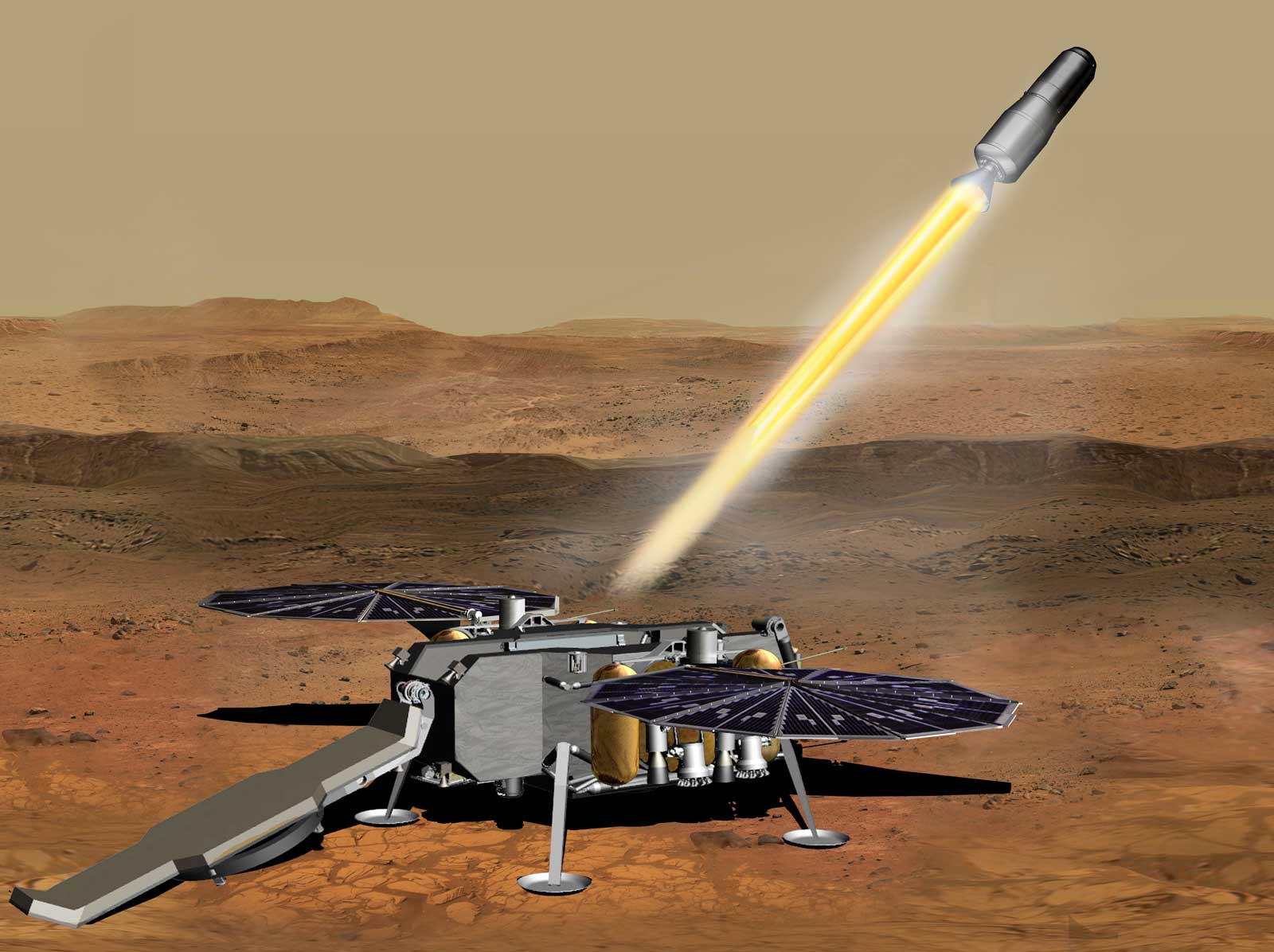
Image courtesy of
NASA/JPL-Caltech
Step 6 (2028? 2029?): The rocket releases its payload into orbit around Mars. It has just enough fuel to push itself away into a slightly different orbit for safety.
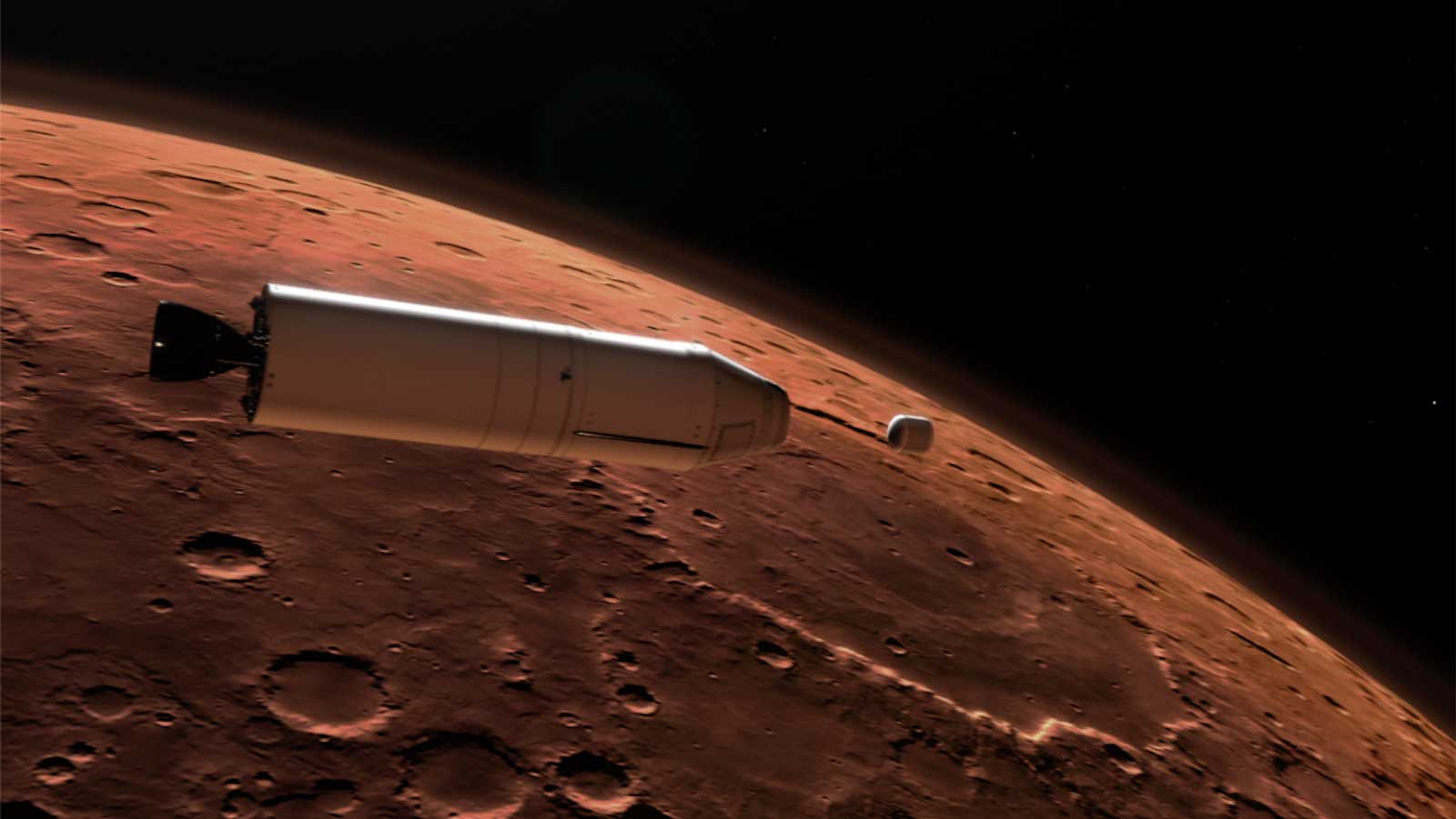
Image courtesy of
NASA/JPL-Caltech
Step 7 (2028? 2029?): A third mission, launched by the ESA, matches orbits with the samples in orbit. It grabs the samples, stows them away, and fires its engines for a return to the Earth.
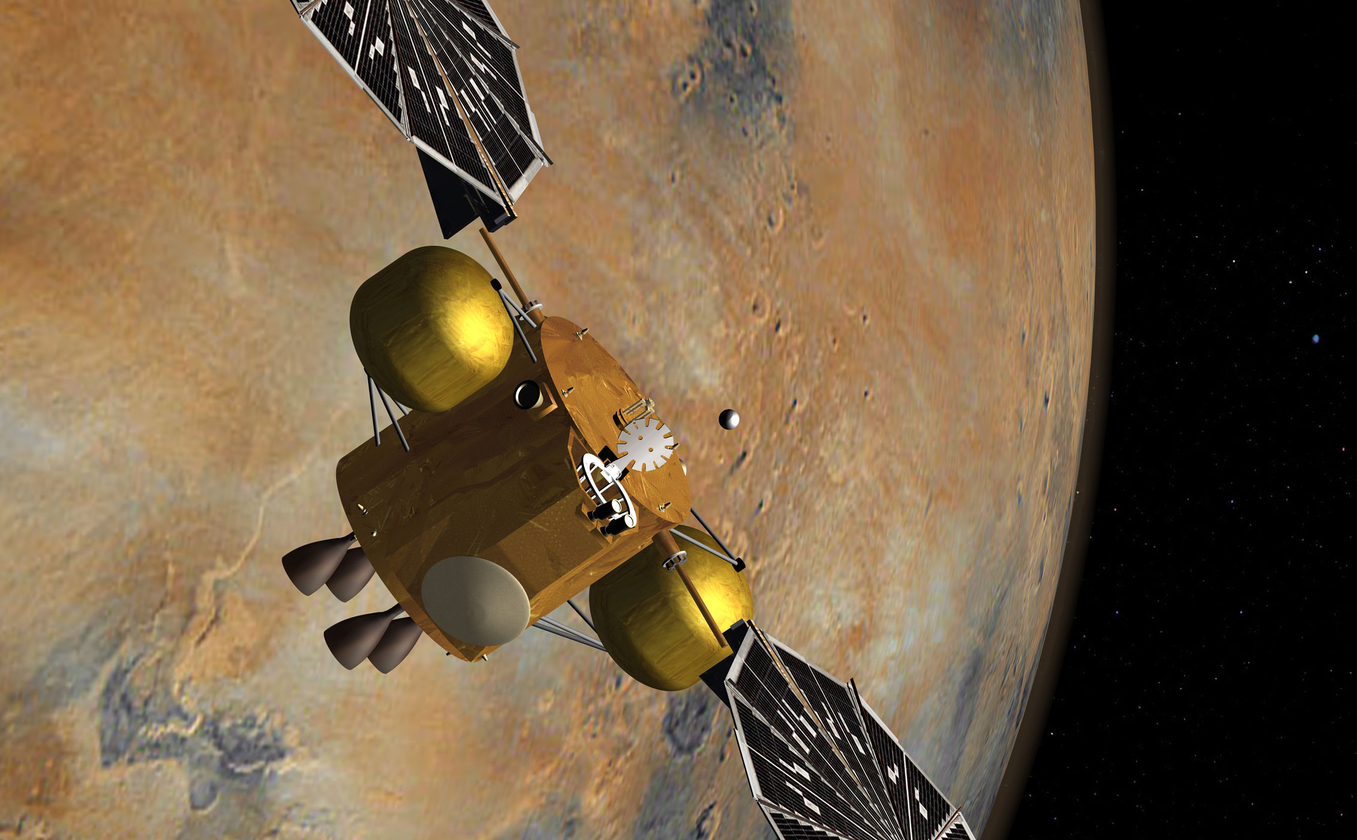
Image courtesy of
NASA/JPL-Caltech
Step 8 (2031?): When the returning spacecraft reaches the Earth, it releases its payload containing the samples in their tubes. The payload (somehow) safely de-orbits and is recovered by NASA.
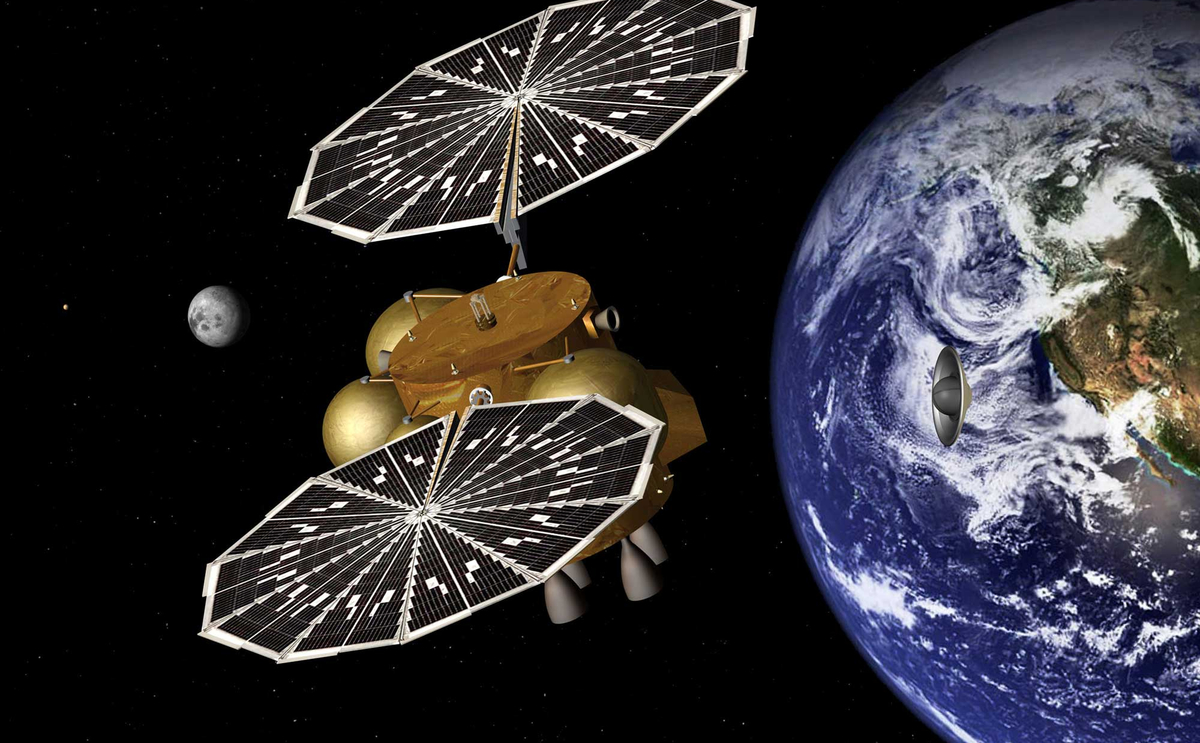
Image courtesy of
NASA/JPL-Caltech
As you can see, this is a VERY complicated process, requiring the cooperation of three different spacecraft. It will take quite some time --- at least ten years from the first sample collection to the eventual delivery to scientists on Earth.
And, speaking of returning samples to Earth, Perseverance just recently collected its first sample of Martian soil! On August 22, 2021, scientists decided to make this rock, nicknamed "Rochette", the target of their second attempt (an earlier drilling operation ended in failure when the soft rock turned into powder and slipped out the drillshaft).
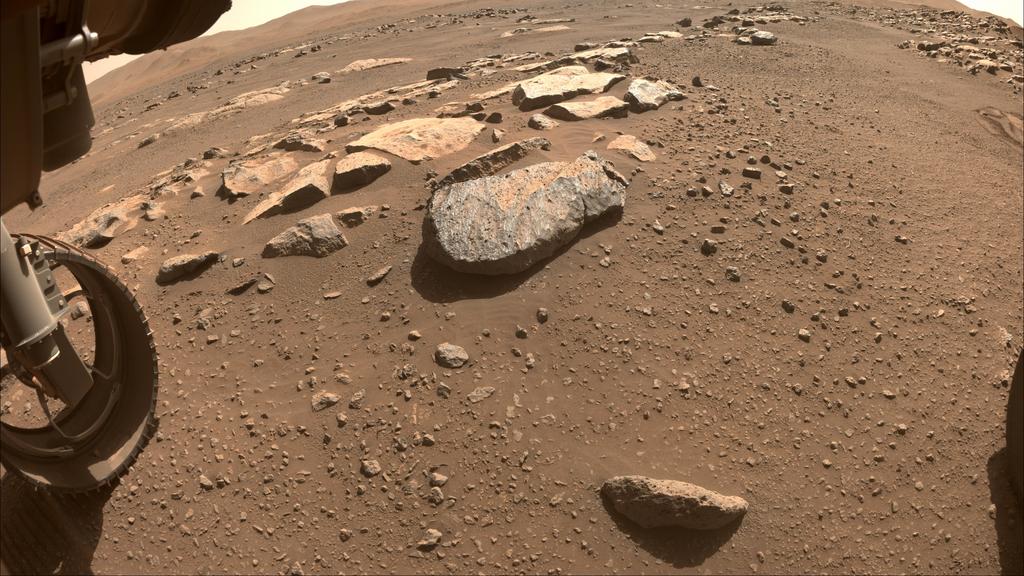
Image courtesy of
NASA JPL/Caltech and
Astronomy Picture of the Day
On Sept 6 and 8, 2021, Perseverance drilled holes in the rock and collected material successfully. (Click on the image to see a short animation, which should start at 10:06 in a longer movie).
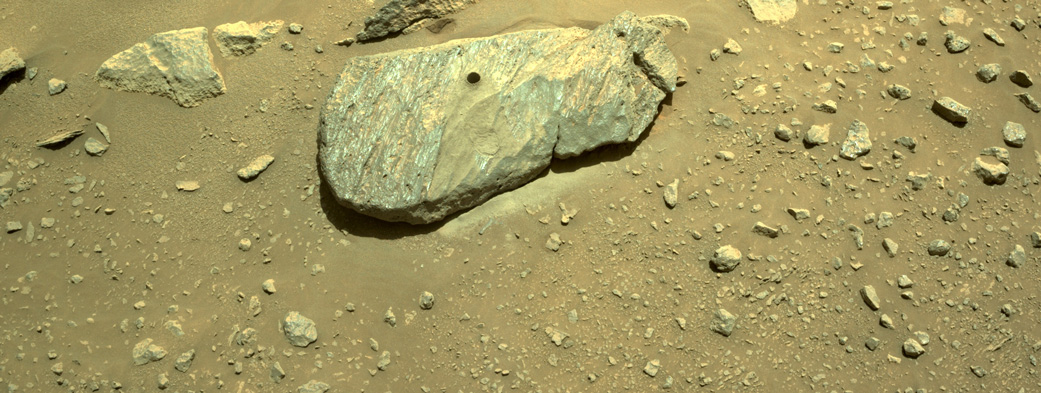
Image courtesy of
NASA JPL/Caltech
Closeups of the cylinder show that it does contain soil.
Hooray! Step 1 is (partially) complete! Only eight more steps, and ten more years, to go ....
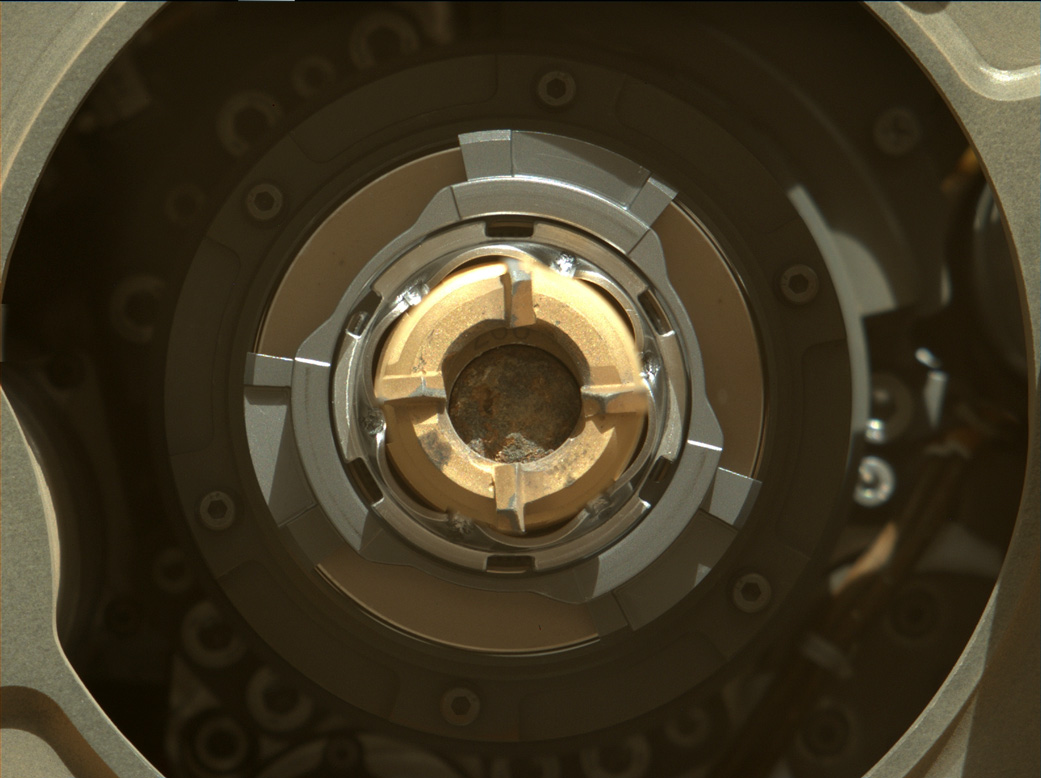
Image courtesy of
NASA JPL/Caltech
The rover carries a suite of scientific instruments. Let's look at some of the major ones.
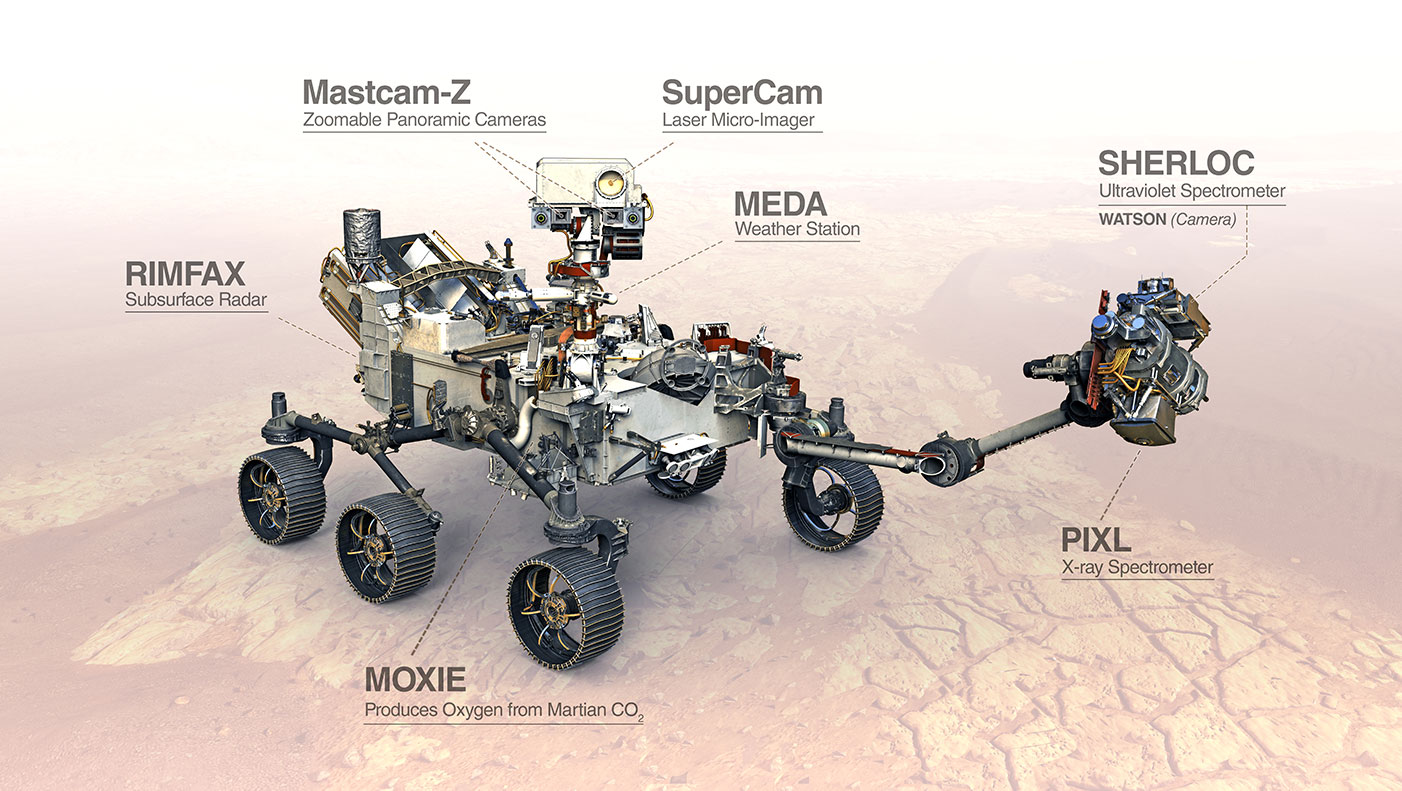
Image courtesy of
NASA JPL/Caltech
The MASTCAM-Z is a pair of cameras, set side-by-side so that they can take stereoscopic pairs. The optics can zoom in on distant objects, or provide very detailed views of nearby features. The unit can also capture short video clips (as you will see in a bit ...)
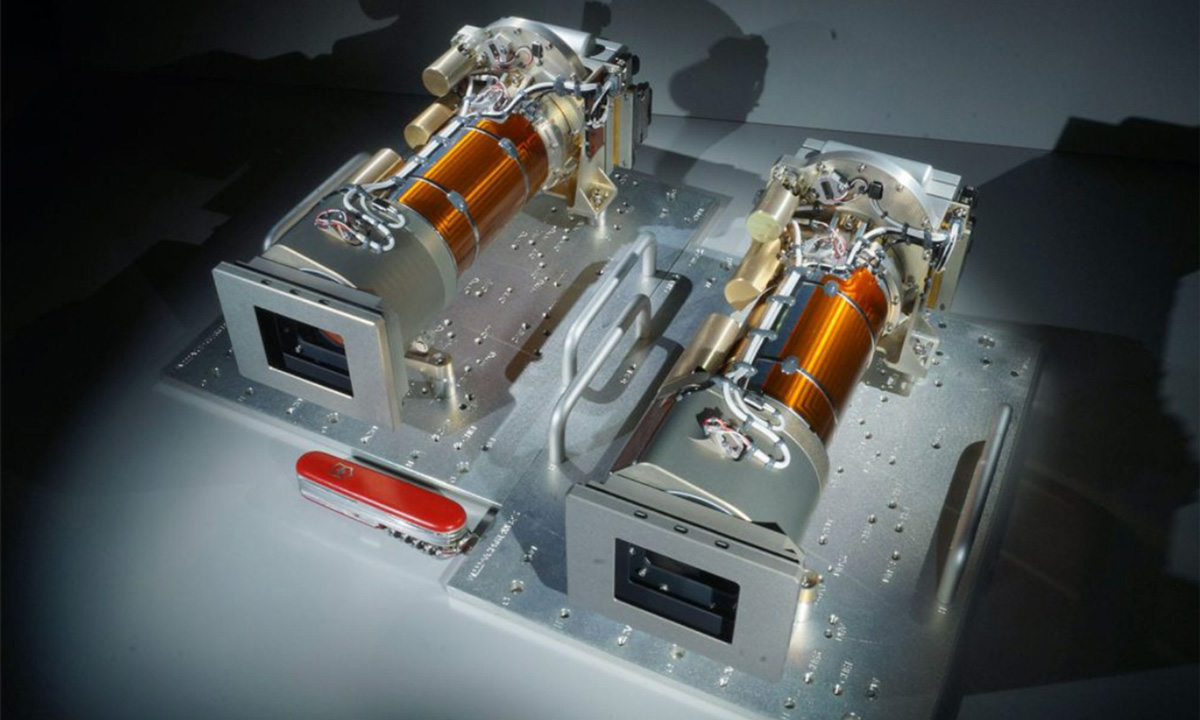
Image courtesy of
MSSS/ASU
The Mars Environmental Dynamics Analyzer (MEDA) is a weather station, mounted on Perseverance's central mast, just below MASTCAM-Z. It keeps track of a bunch of environmental properties: temperature, humidity, wind strength and direction, as well as measuring the dust particles which fly past its sensors.
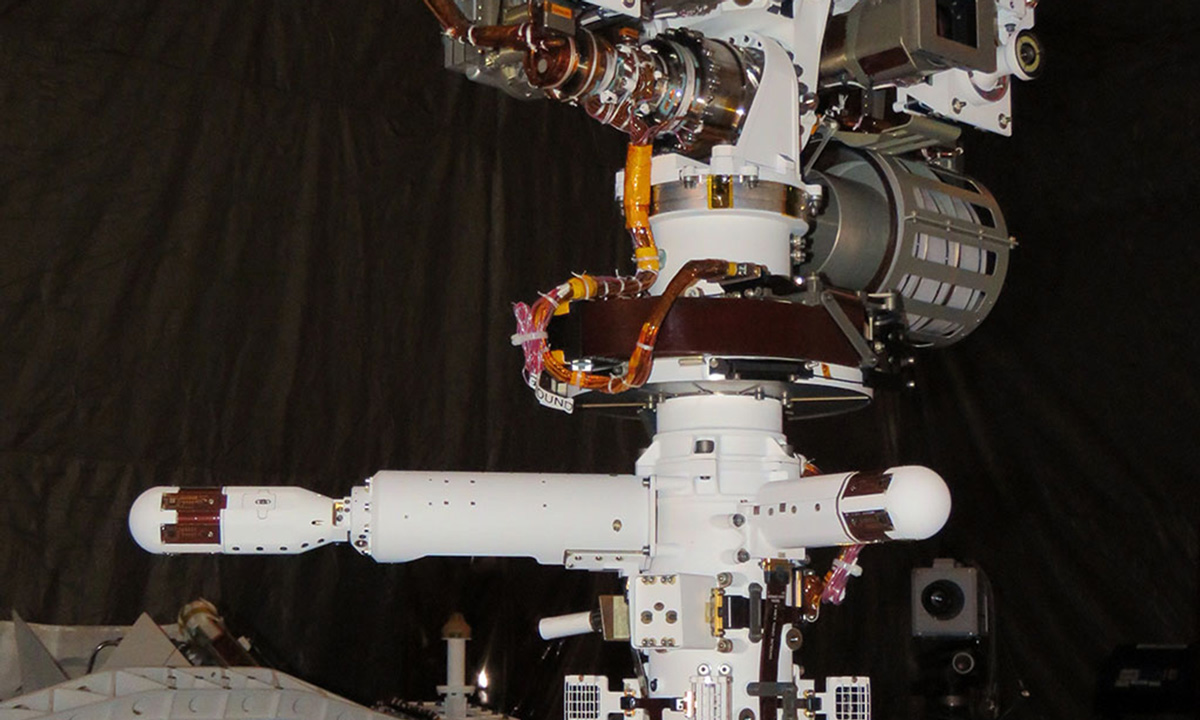
Image courtesy of
NASA/JPL-Caltech
The next instrument is, well, more of an engineering testbed than a scientific sensor. MOXIE -- Mars Oxygen In-Situ Resource Utilization Experiment -- sits in the belly of the rover. It tests the efficiency of chemical processes which can turn carbon dioxide, the major constituent of Mars' atmosphere, into molecular oxygen. This could be an important tool for the machines on any future human habitation on Mars.
2 CO2 --> O2 + 2 CO
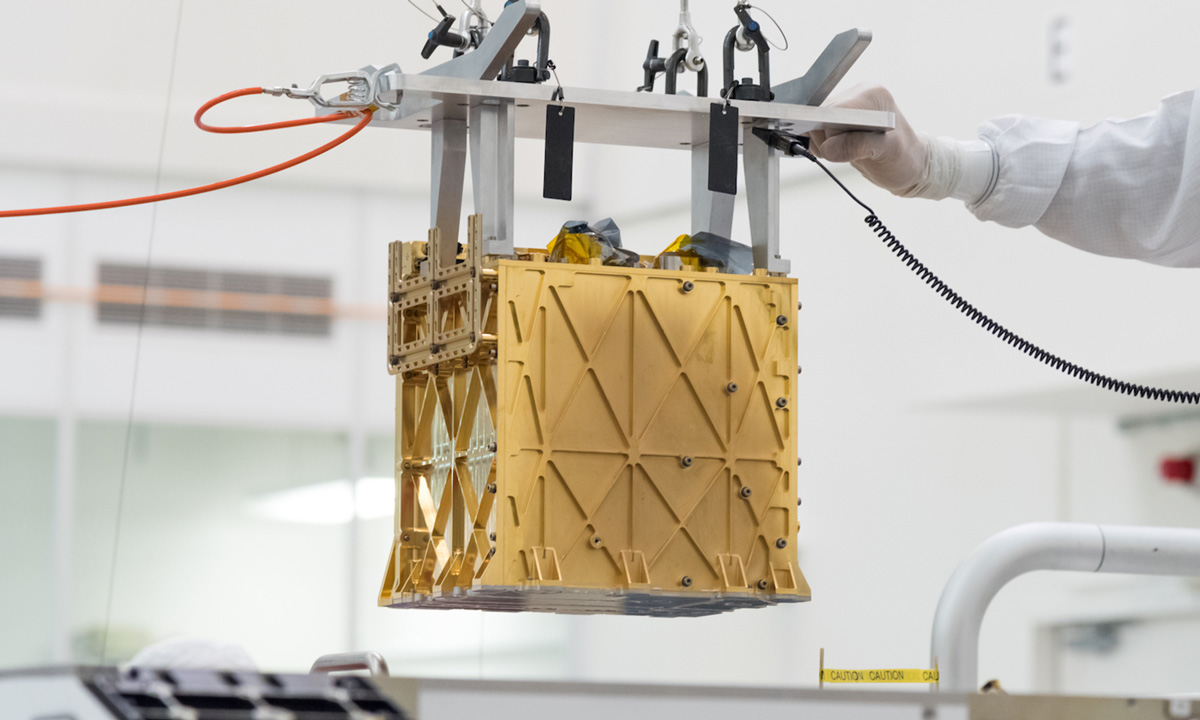
Image courtesy of
NASA/JPL-Caltech
Another instrument that lies inside Perseverance's body is RIMFAX, the Radar Imager for Mars' Subsurface Experiment. It shoots radio waves downward, into the surface of the planet, and listens for the echoes. Based on the patterns it receives, it can make a map of material and any structures below the ground, down to 10 meters or so, depending on the type of rock. It can also detect the presence of pockets of ice or water buried there.
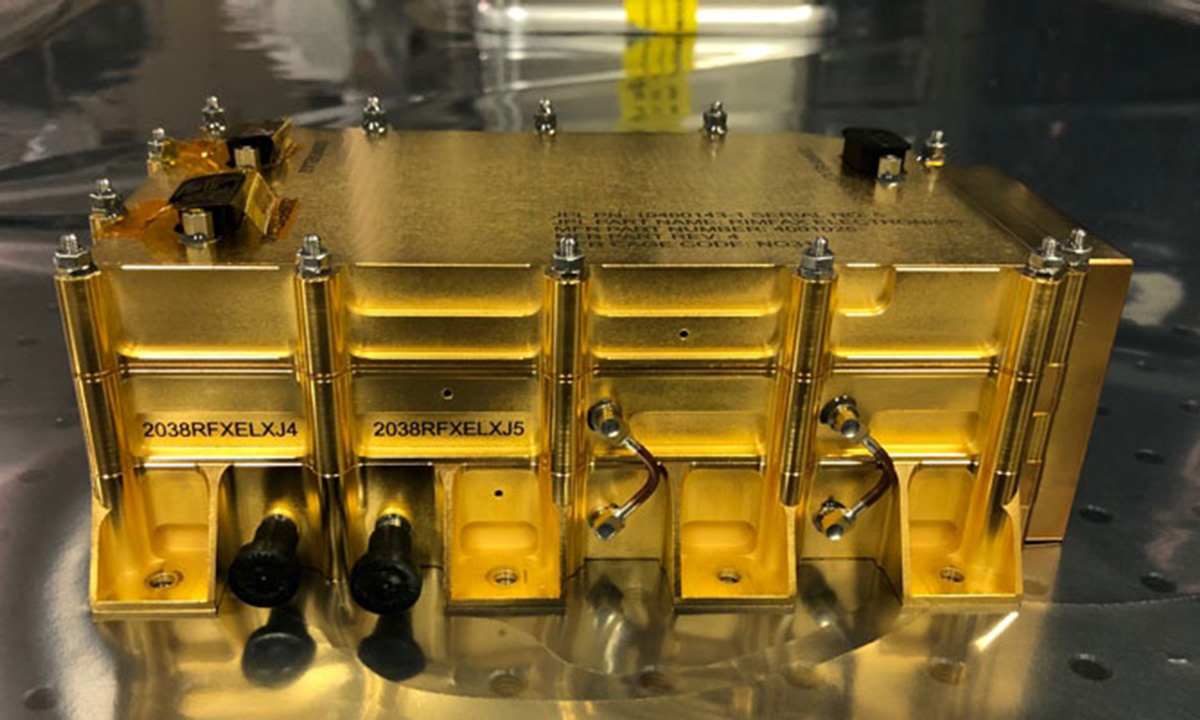
Image courtesy of
NASA/JPL-Caltech
Out at the end of the robotic arm sit two instruments. One of them is PIXL (Planetary Instrument for X-ray Lithochemistry), which bombards samples of soil or rocks with X-rays, which excite the atoms in the material. When the atoms emit radiation in response, PIXL uses the pattern of radiation to identify the elements present in the material.
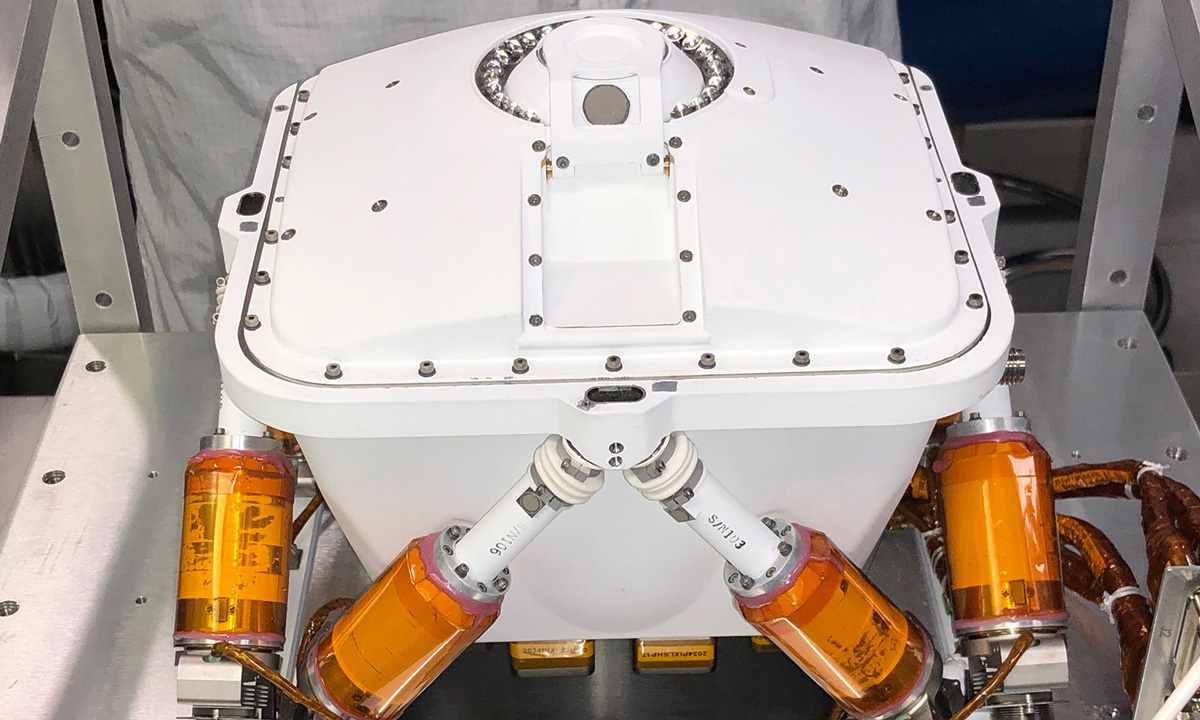
Image courtesy of
NASA/JPL-Caltech
Below are some results of one of PIXL's first scans.
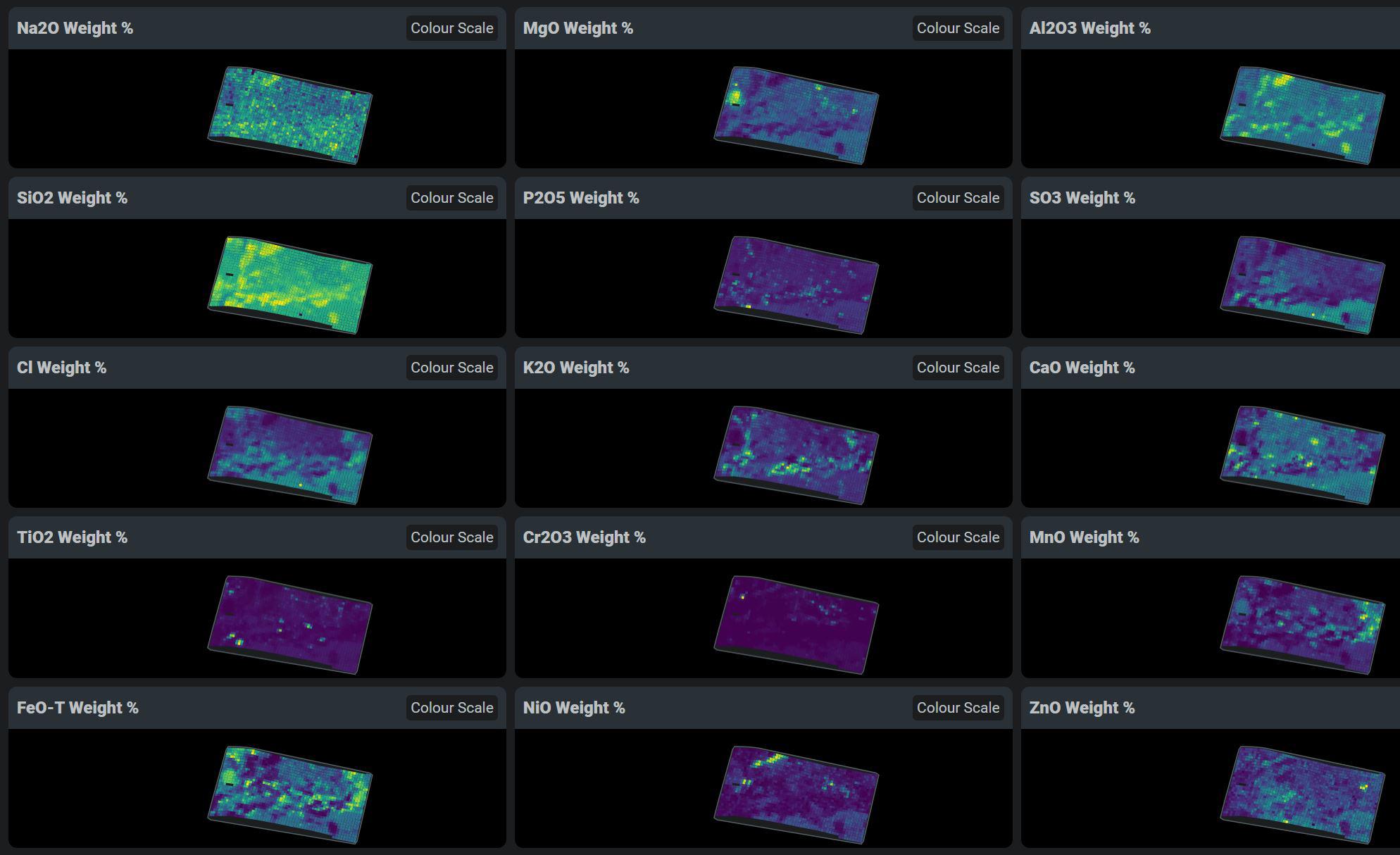
Image courtesy of
NASA/JPL-Caltech
Also mounted on the robotic arm is SHERLOC (Scanning Habitable Environments with Raman & Luminescence for Organics & Chemicals), which uses a different technique to identify the chemical composition of Martian materials. It shines an ultraviolet laser beam at rocks or soil, then measures the spectrum of the light which either bounces off the surface, or is later radiated away as molecules excited by the laser gradually lose their energy. Of course, SHERLOC can't carry out its investigations alone. Mounted next to it is WATSON, an optical camera/microscope which is designed to take close-up pictures of details as small as 15 micrometers.

Image courtesy of
NASA/JPL-Caltech
The final instrument we'll discuss is SUPERCAM, which sits on top of the main mast, next to MASTCAM-Z. SUPERCAM uses several cameras, spectrometers, and a laser, all working together, to measure the chemical properties of rocks and soil. Using its laser, it can vaporize small samples of material, then measure the light emitted by the hot gas and identify its elemental composition by the spectroscopic signatures. Unlike PIXL and SHERLOC, which must be placed next to their subjects by the robotic arm, SUPERCAM can investigate objects which are beyond Perseverance's reach.
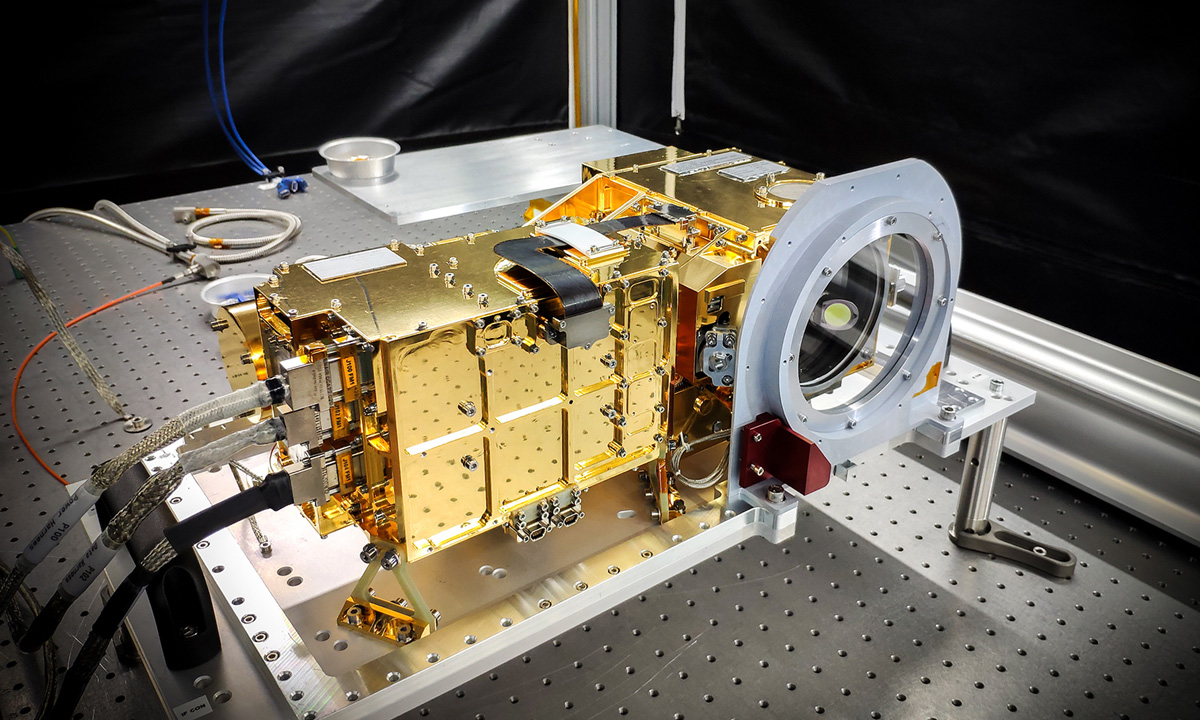
Image courtesy of
NASA/JPL-Caltech
One of the new features of Perseverance is the "pet" it brought along with it on its journey. "Ingenuity" is the name given to the lightweight helicopter that was released from the underside of the rover soon after it landed. This helicopter doesn't carry any real scientific instruments -- just a couple of cameras. Its purpose is to serve as an engineering test of flying vehicles in the very thin Martian atmosphere.
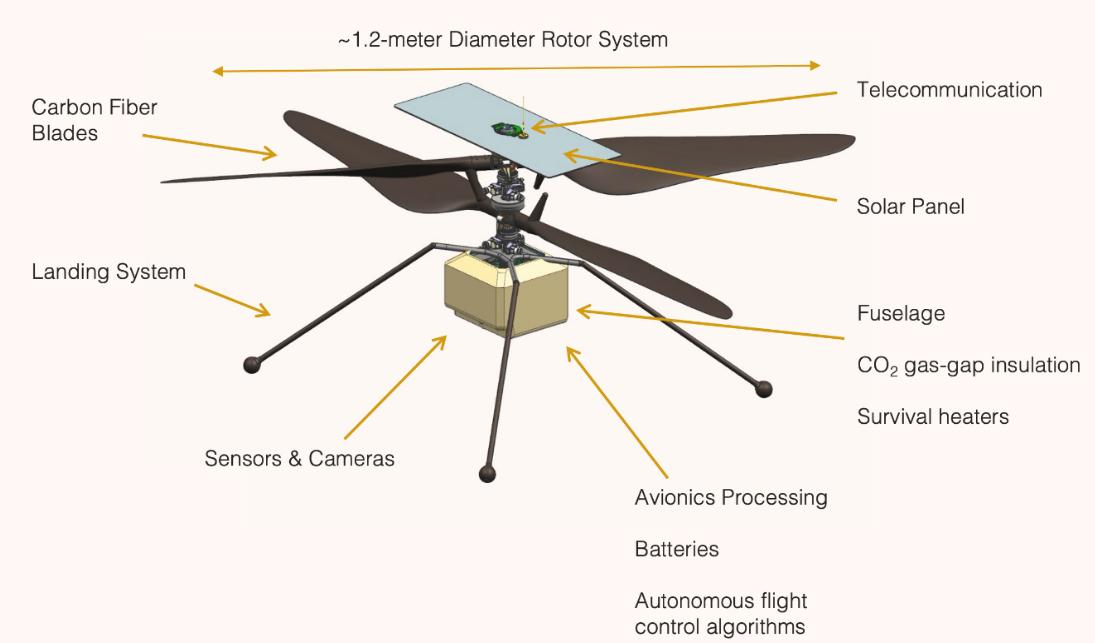
Image courtesy of
NASA/JPL-Caltech
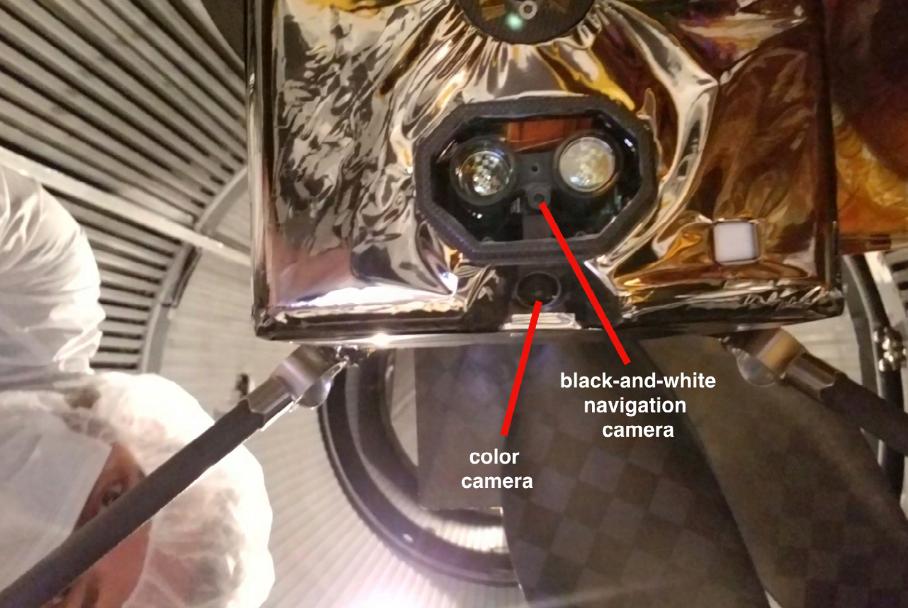
Image courtesy of
NASA/JPL-Caltech
It has succeeded in making twelve (or more) very brief journeys around the rover.
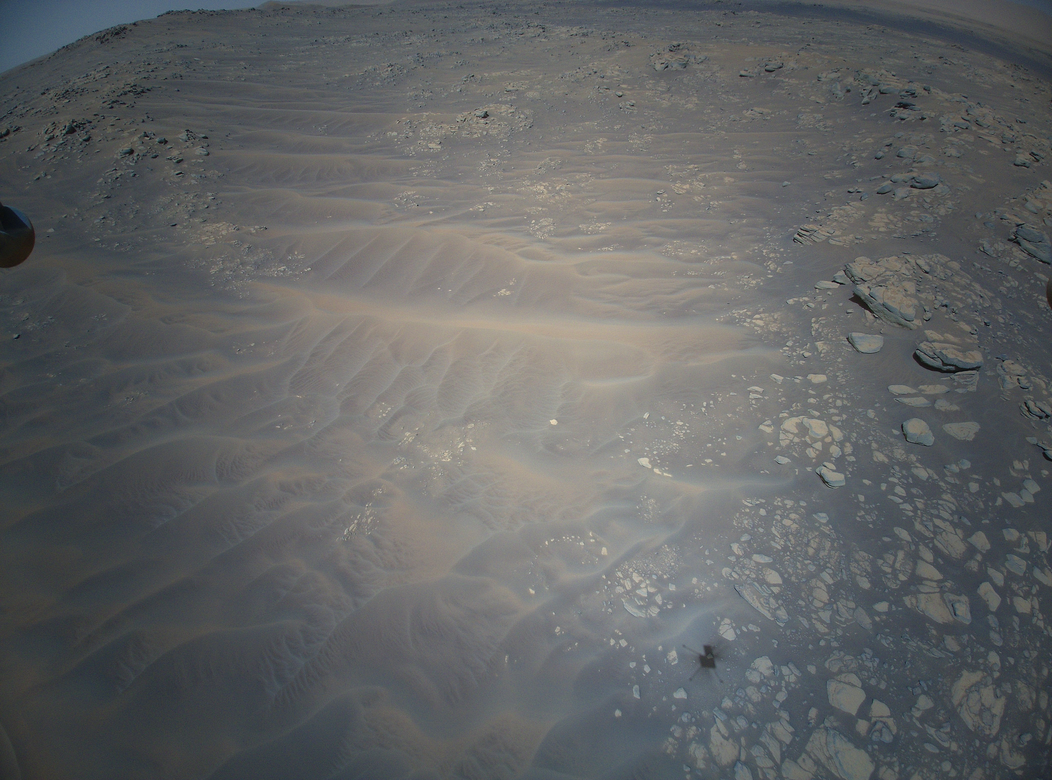
Raw image taken by the color camera on
Aug. 16, 2021 (Sol 174 of the Perseverance rover mission)
at the local mean solar time of 13:25:40,
courtesy of
NASA/JPL-Caltech
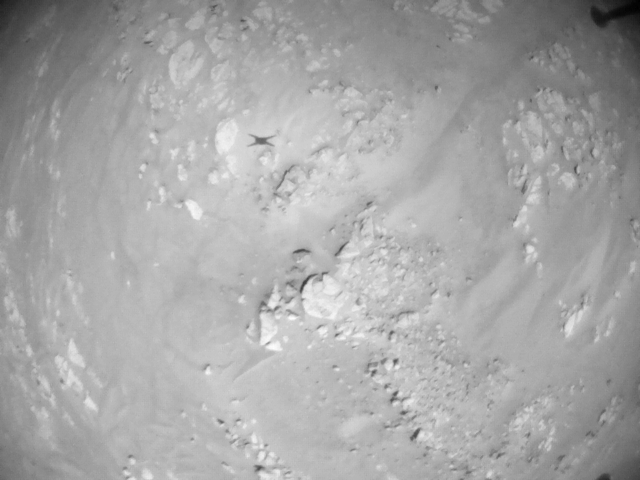
Raw image taken by the navigation camera on
Aug. 16, 2021 (Sol 174 of the Perseverance rover mission)
at the local mean solar time of 13:26:14,
courtesy of
NASA/JPL-Caltech
We can even watch a movie of its fourth flight, which features an audio track!
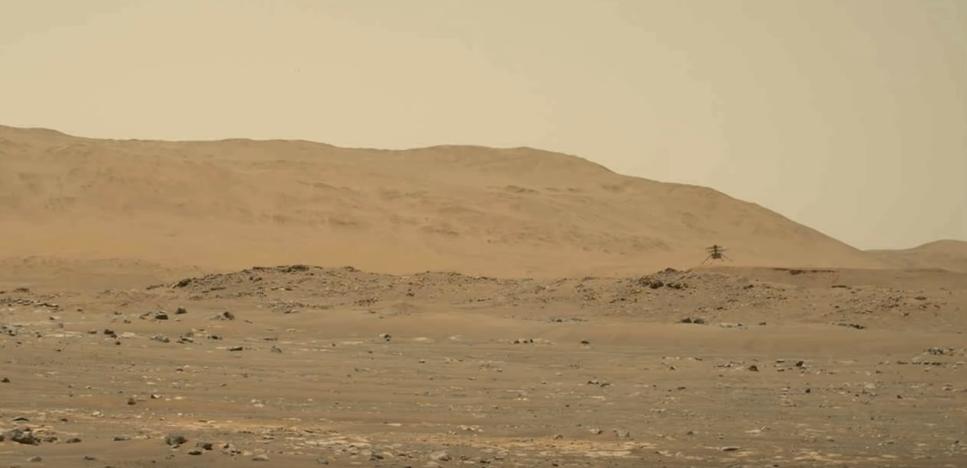
Image and video (with audio!) of Ingenuity's fourth flight
courtesy of
NASA/JPL-Caltech/ASU/MSSS/LANL/CNES/CNRS/ISAE-SUPAERO
Ingenuity has been a great success, flying as far as about 300 meters during the up-to-90-second periods that its batteries can provide the 350 watts it needs.
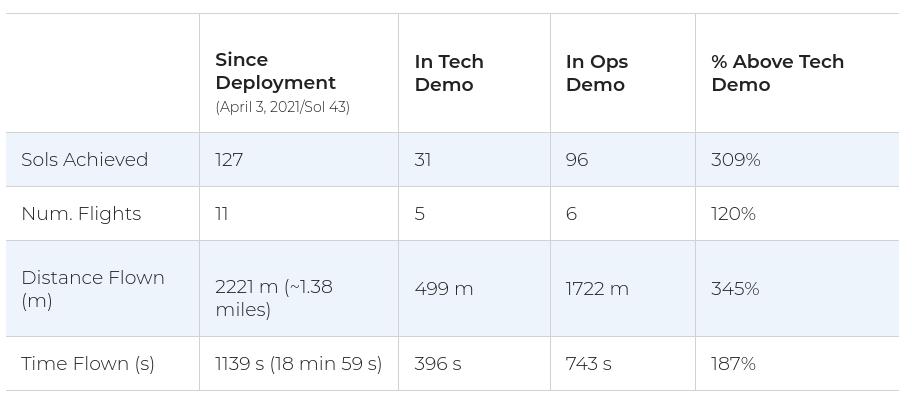
Log of flights as of Aug 15, 2021 (missing one more recent flight)
courtesy of
NASA/JPL-Caltech